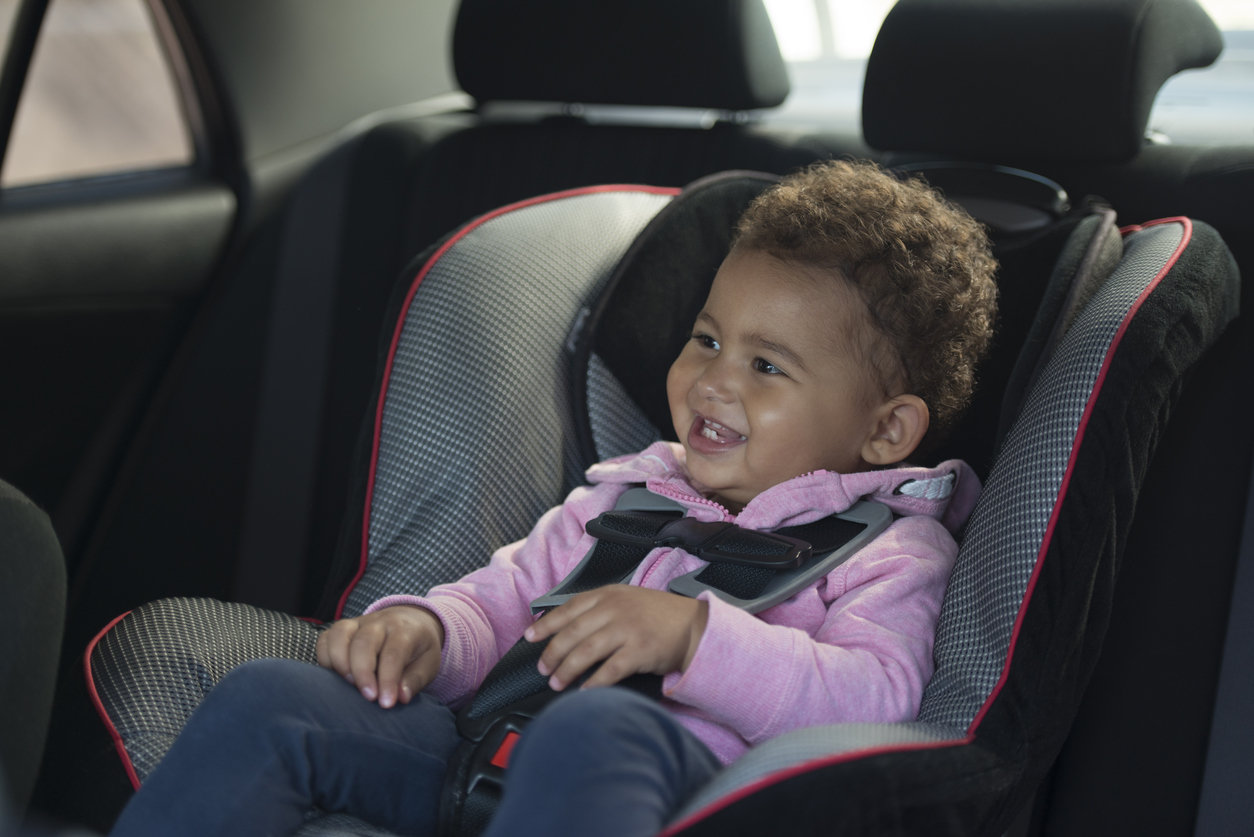
The purpose of a car seat is to protect a child in the event of a worst-case scenario. But in order for this piece of safety equipment to do its job to the best of its ability, parents need to know the things that could unintentionally inhibit it from keeping their little ones safe. Many moms and dads are aware of the importance of not putting their kiddos in bulky jackets, properly securing the straps, and when to move from rear-facing to front-facing, but those aren't the only things parents need to know when it comes to car seat safety.
Car seat experts from the United Kingdom are warning parents not to install car seats under a headrest. Although some parents or grandparents think that wedging the car seat under a headrest will make it more secure, and therefore safer, this is actually a serious misconception. Child Seat Safety Limited shared on social media that this common mistake can actually keep the car seat from being able to fully protect a child during a crash.

More from CafeMom: The 'Life or Death' Move That Saved a Baby When Their Car Landed Upside Down in a Ditch
"When you're fitting a car seat in a vehicle, don't wedge a head restraint over the top of a seat. It's tempting to do this, as they do get in the way sometimes," a spokesperson wrote on Facebook. "In a crash, the child will come forward, the seat needs to go with them. If it's wedged in by the head restraint the child will come forward without the protection of the seat."
Instead of taking any chances, parents should turn the head restraint around or remove it and keep them in the trunk or garage while their kids are in car seats. "We check thousands of child car seats on an annual basis and one of the most common mistakes is that parents leave the head restraint in, which pushes the seat forward, or they use it to help hold the seat in place, which in fact stops the seat from working properly in a collision," Julie Dagnall, director of Child Seat Safety Limited, told Manchester Evening News. "Remember not all car seats fit all cars so check your car handbook on how to adjust or remove your head restraint and find out what the car seat manufacturer recommends for the restraint you are using."
More from CafeMom: Why This Mom Flipped Her Son's Car Seat Upside Down
It's also important to understand that it's not just the car seats wedged under a headrest that can cause problems — the warning is for all car seats under the headrests as they curve and can come into contact during an accident. "The ones wedged in will prevent the natural movement of a seat if involved in a collision," car seat expert Stuart Howarth told the Huffington Post UK. "The ones that have the seat resting against the headrest will cause a secondary recoil on the child seat and potentially push the child's head forward again when it should have come to rest. There should be distinctive clearance on all child restraints between the headrest in the vehicle and the top of the child's seat."




